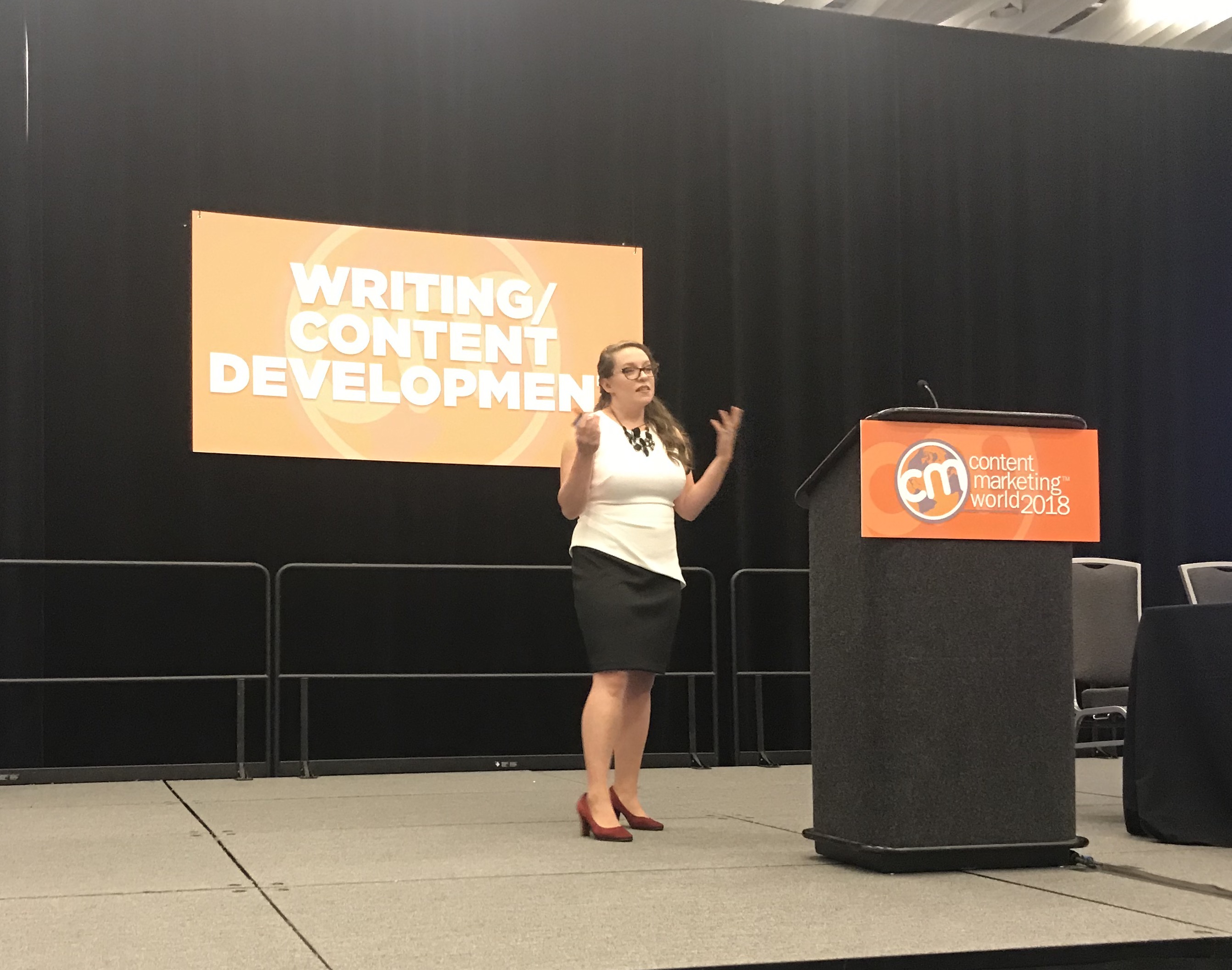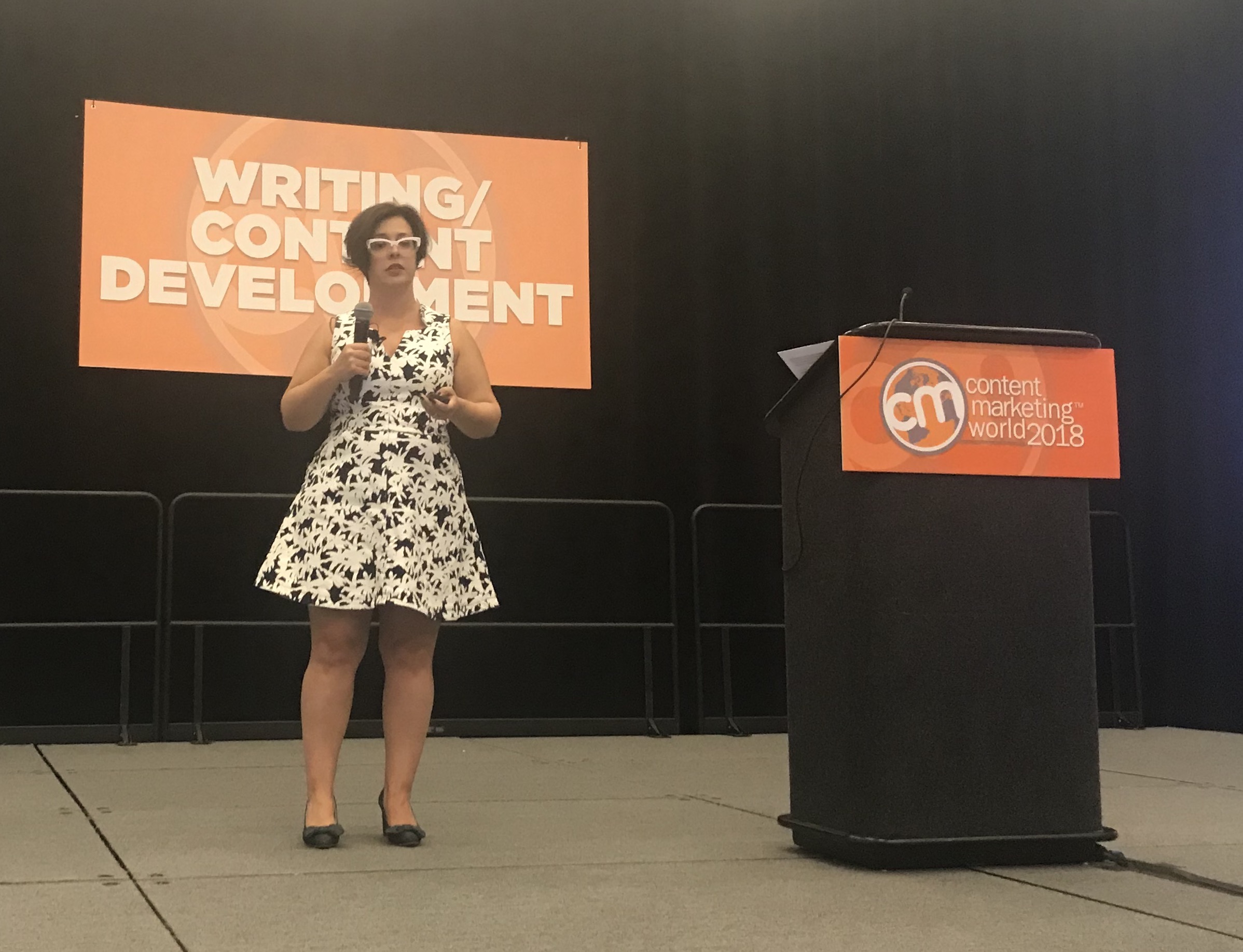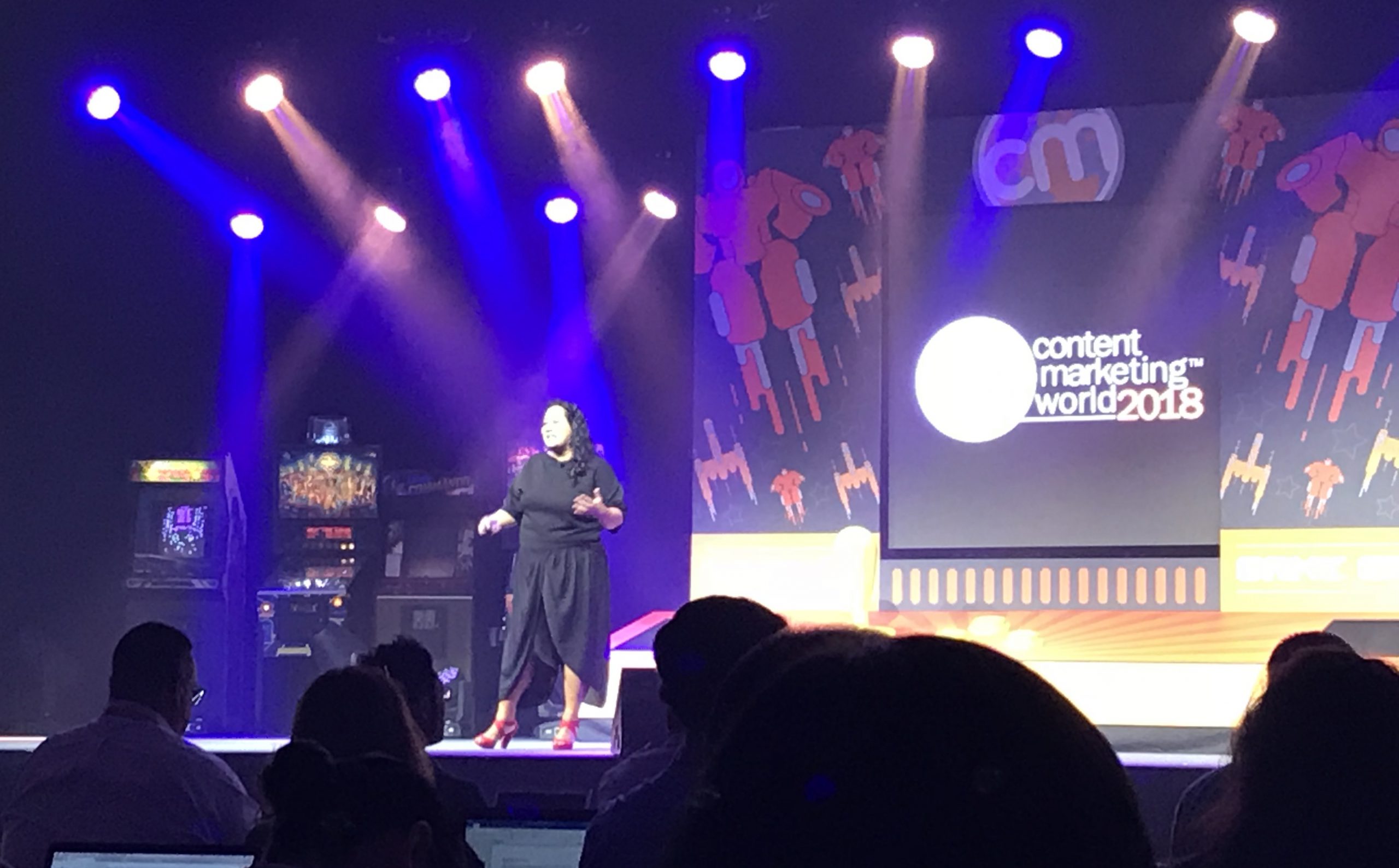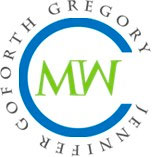Guest Post: Kristen Hicks finds 3 content creation themes for writers at Content Marketing World
Note from Jennifer: I wrote a blog post last month about Content Marketing World, which I didn’t attend for the first time in four years. While I was able to following along on Twitter and rounded up some of my favorite quotes from the conference, it’s no substitute for actually being there. Fortunately, Kristen Hicks was! She traveled from Austin, Texas, to attend the event and summed up a few key themes that content marketing writers need to know. Read her insightful post, and then visit her blog at Austin Copywriter to learn more about her work and follow her on Twitter.
 By Kristen Hicks
By Kristen Hicks
Last month, over 4,000 marketers—many of them wearing orange—descended on downtown Cleveland to soak up knowledge, network with colleagues, and experience the city. Content Marketing World is a gathering of people who actually “get it” when you say what you do for a living. The sessions are full of insights covering all aspects of working as a content marketer — from analytics to influencer marketing to content marketing technology tools and, of course, content creation.
That makes it a really good place to get a feel for the biggest trends and issues shaping the industry. Whenever I heard a topic addressed in multiple talks—particularly when the talks themselves were focused on different subjects—it was a signal that this was an important theme for content marketing writers to be aware of in the coming year.
For those of you who couldn’t make it to Cleveland this year, here are the three biggest themes I picked up at Content Marketing World and what they mean for content marketing writers like us.
#1: Influencer marketing is more important than ever.
The content we write can’t go very far if our audience can’t find it. With over 440 million blogs competing for people’s attention, making sure the people you want to reach find yours has become one of the biggest challenges in content marketing.

Michelle Park Lazette talks about storytelling like a journalist.
Over and over again, speakers in the sessions I attended talked about influencer marketing as one of the solutions to this challenge. In her session on storytelling like a journalist, Michelle Park Lazette recommended leveraging people in your content creation. Interview industry experts to both lend authority to your pieces and add some extra personality to your stories.

Margaret Magnarelli talks about the power of a small, engaged influencer audience.
Lee Odden gave a talk all about influencer marketing. He defined an influencer as someone who has the ability to affect action. Someone can be popular but may have followers who won’t listen to their advice—and the whole point is finding someone your audience trusts who can drive real action. In her session on empathy in content marketing, Margaret Magnarelli expressed a similar idea: when it comes to influencers, a small but engaged audience is better than a large unengaged one.
Clearly, speakers across different subjects had influencers on the mind.
What this means for content marketing writers:
Both Michelle and Andy Crestodina, who spoke on creating a top 1% content marketing strategy, shared the same idea: “an ally in creation is an ally in promotion.” One of the most powerful ways to get influencers to help promote your content is to bring them in as sources.
Andy called collaboration an “all-powerful tactic.” When someone helps in the content creation process, they become invested in the success of that content. For content marketing writers, making strategic use of industry sources in your work can pay off in giving your pieces a boost in reach.
Both Lee and Michelle emphasized the value of using internal and external sources. The internal sources show how well your company knows their stuff, and the external ones can share your content with a new audience. If you don’t already, make bringing expert influencers into your content marketing strategy a priority this year.
#2: Keep it personal.
While we hear a lot about the importance of analytics in content marketing, a number of speakers talked about how important it is to have a human-to-human connection in your content.
Margaret advised her audience to “use data, but combine facts with feelings.” In her talk, Ann Handley brought up Warren Buffet’s extremely popular letters to shareholders. When he writes those letters, he’s picturing one specific person as his audience: his sister Doris.
If he wrote to a faceless mass of shareholders, those letters wouldn’t feel as human or relatable as they do. According to Handley, the more specific you are in picturing your audience, the more universal your content becomes. She urged us all to find our Doris.
When Michelle talked about using sources, she told us to let their personalities shine through in the content. And in his (extremely popular) talk on creating content for boring, complex, and undifferentiated brands, Jonathan Kranz told the audience to start by focusing on the person who needs the product — make them the star of your content. Figure out who they are and what problems your content can help them solve.
What this means for content marketing writers:
Don’t be afraid to let some personality into your content. Jokes and pop cultural references (if you’re confident your readers will get them) make your brand more human to your audience and provide an opportunity for real connection.
Another important way to connect more directly with your audience is to spend time with them. This can be challenging for freelance content marketing writers, but if you can manage it, spending time with a client’s customer on an individual basis can offer useful insights into what their actual needs and pain points are.
Margaret brought up the identified victim affect: nonprofits show photos of individuals who are helped by their efforts rather than groups because research shows people connect better to one person. The customer you talk to can become your Doris and enable you to connect more effectively with your audience.
#3: Creating content during volatile times.
As Margaret euphemistically put it in her talk, we live in “interesting times.” Schachar Orren gave a talk on digital storytelling in the age of bad news where she addressed the fact that our audience is never encountering our content in a vacuum. It shows up in their email inbox or on their feed surrounded by stories about depressing or enraging world events. That context matters.

Kathleen Diamantakis talks about the importance of meaningful content.
Kathleen Diamantakis of The New York Times shared recent research that found that after 10 minutes on Facebook, people are in a worse mood. And yet on average people spend about an hour on the platform each day.
Her talk suggested that the answer isn’t providing content that would make your audience happy. Happy is nice, but what’s more important is to create content that has meaning. She brought up the recent Nike ad featuring Colin Kaepernick—an ad that got a lot of mentions throughout the conference—as a good example of content that has meaning. With it, Nike showed they stood for something.
And while the ad has been controversial, sales for the company have gone up 31% since it came out.
In the conference’s final and most anticipated event, an interview with Tina Fey, she addressed the same idea. She suggested that in this moment, the decision to take a stand is bigger than marketing. We’re living at a point in time where the need to express our values feels important.
What this means for content marketing writers:
Look for ways to create content that goes beyond the educational and promotional and makes the world better in some way. What that means for your business or clients will depend on who your audience is—it could mean taking a political stand in your content like Nike did, or it could mean putting your brand’s support behind a charitable cause that matters to you and your audience and highlighting it in your content.
In the “interesting times” we live in, finding ways to connect with your audience over shared values can build a stronger relationship with them and produce content they find more meaningful.
Additional takeaways
If you missed Content Marketing World, but want to soak up some of the knowledge shared at the conference, they sell video access to the presentations. As a protip, if you view a session you like, the speaker could become a potential influencer to feature in your content. In my experience, every presenter I’ve met at Content Marketing World is a friendly and generous person happy to help out with an interview or quote if you reach out to them, especially if you lead with a kind word about their talk.
Have you noticed these themes emerging in the content marketing industry? How will they affect your strategy for content creation in the coming year?


Thanks for sharing your valuable experience. Finding common threads throughout presentations is a sign of current trends.
There are several conferences that address content marketing. Is Content Marketing World the best one?
I have to travel to all of them. Denver is closest and has Digital Marketing Summit — do you know if DMS is of similar value?
Sorry for the slow response. So far, the only one I’ve attended is Content Marketing World, so I can’t speak to others. But I’d say it and Inbound (the Hubspot conference that happens around the same time) are the two biggest and probably the best for making contacts in the content marketing industry.
[…] Lee Odden — Kristen Hicks finds 3 content creation themes for writers at Content Marketing World — The Content Marketing Writer […]
Wow! This post is filled with fantastic gems (I even took a couple of screenshots to save in my notes for quick reference). One of my niches is finance, so definitely filled with boring data, but it’s important to remember the human element. I also love the point about using shared values to connect to readers. Thanks for summarizing it all and how content marketing writers can apply it to their work!
Very informative post and a bird’s eye view of the CMW, and what the presentations mean to Content Marketing writers.